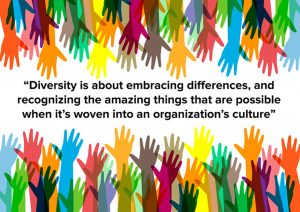CHECKING IN ON OUR UNCONSCIOUS BIAS
Biases are a hot topic these days so we thought we would check in on our understanding and highlight the potential pitfalls of unconscious bias.
If a bias is an inclination or preference that influences judgment from being balanced or even-handed, those of us living in this world have plenty of opportunity to exercise bias, consciously and unconsciously.
This is not a discussion of the conscious application of bias, this writing is intended to highlight where unconscious bias might lie so we shed light on it, and it can no longer be unconscious.
It is important to note that just because it’s a hot topic now, we cannot simply give everyone cultural sensitivity training and wash our hands of it. If this is to be systemic change, then our training, discussions, and policies have to have a long term and regular application and need to seek out these unconscious biases.
In BC/Canada there is very specific legislation around what are called Protected Grounds. It is against these Human Rights Laws to discriminate based on:
- race
- national or ethnic origin
- colour
- religion
- age
- sex
- sexual orientation
- marital status
- family status
- disability, and
- a conviction for which you have been granted a pardon.

Bias in the workplace can impact hiring, promotions or advancements, job security and compensation to name a few.
Gender bias, or sexism, is one of the most regularly appearing biases in the workplace. The gender bias can touch on the protected grounds of sex, sexual orientation, marital and family status. It can manifest through:
- A person being selected less for interviews
- Having work/work contributions devalued in comparison to peers
- A person can be interrupted more frequently in discussion
- Result in a lower initial salary & decreased salary growth in comparison
- Being perceived as less capable for leadership roles
- Have stunted career growth opportunities
A racial bias will touch the protected areas of race, national or ethnic origin, color and religion. The same manifestations as Gender bias can occur in the workplace, and spill over into other areas of mainstream life, such as health service availability/treatment, treatment in stores and restaurants, applying for loans and mortgages or rentals and in dealing with law enforcement. I don’t think too many people will be uninformed of the accounts that are being brought forward at this time. If you are, a simple google search will produce many news accounts.
As part of a study by Ryerson University and the University of Toronto, in 2011, researchers sent out almost 13,000 fake resumes to over 3,000 job postings. The data was revisited in 2017 and the findings are disturbing. The data showed that people with Chinese, Indian or Pakistani sounding names were 28% less likely to get invited to an interview than the fictitious candidates with English sounding names, even when their qualifications were the same.
The Toronto Symphony Orchestra began hiring musicians blindly in 1980, by putting them behind a screen. The results were profound — the orchestra which was previously made up almost entirely of white men in the 1970s, is almost half female today and much more diverse.
An interesting bias is called Confirmation Bias. If we don’t work to challenge our thoughts, we will remain on the same path without moving towards a diverse conscious. Confirmation Bias happens when we:
- Neglect seeking out objective facts
- Interpret information only to support an existing belief
- Only remember details that support your belief
- Ignoring information that does not support your belief.
Here’s an example. Your unconscious bias, tells you that women aren’t suitable for management positions because they aren’t strong enough emotionally. FACT or BIAS? If you hold that bias, then any interaction with that female co-worker or subordinate is colored with this perceived weakness. So you seek out confirming behaviour, you only recall behaviours that supports the belief and you ignore all demonstrations of strength. Unconsciously/consciously you have marginalized the potential of a worker, based on non factual information. A bias.
So what’s the solution? Here’s the big start.
AWARENESS: Have a solid truthful look at yourself and then your workplace. Look for areas where unconscious bias can occur and strengthen those areas to remove opportunities for bias. Use numerical scoring systems to screen job applicants based on skills and abilities, remove identifying markers during an assessment phase.
Not every organization can afford screening software that is trained to remove bias markers, so it will start with you.
Slow down and recognize bias in yourself. Encourage Supervisors and teams to challenge their own assumptions and biases, seek out opportunities in the workplace to identify and eradicate bias.
Workplace Diversity is a GOOD THING, and this is proven. A diverse workforce brings forward more creativity, productivity and harmony. While systemically and culturally we are conditioned to appreciate that which is similar, we need to challenge that conditioning and step forward into a new way of being.
